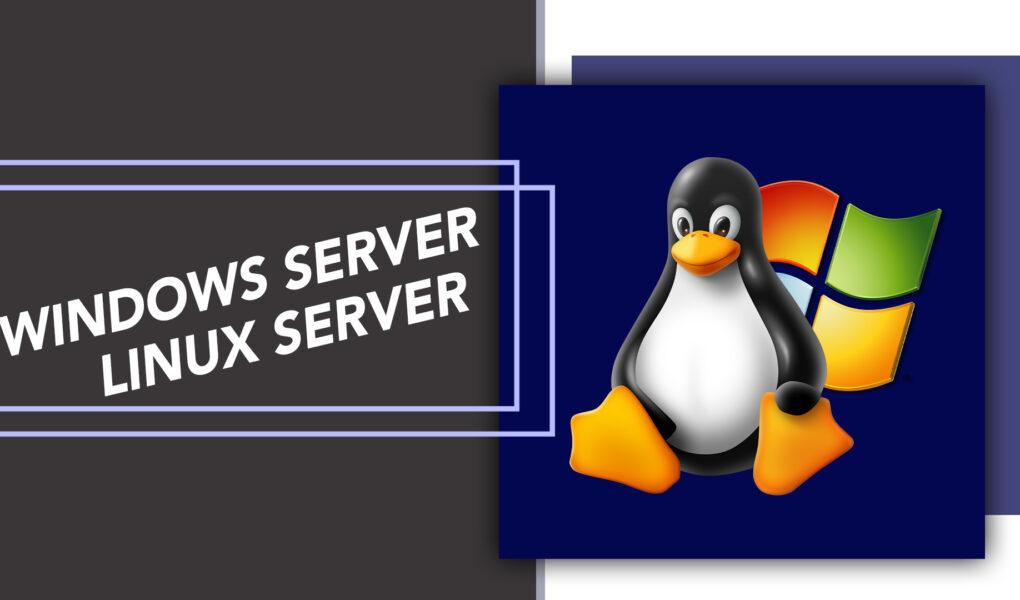Servers are high-performance computers specifically designed to manage, store, transmit, and process data continuously, around the clock. They play a pivotal role in networking, providing a host for storing files, managing databases, running applications, sending emails, and performing many other important tasks. Two popular types of servers are Windows Server and Linux Server. However, it is crucial to comprehend the differences between the two choices to make an informed decision that best suits your individual requirements.
About Windows Server
Windows Server is a range of enterprise-class server operating systems developed and distributed by Microsoft, the technology giant known for numerous popular products, including the Windows line of operating systems, the Office suite, and Azure cloud services.
Since its initial release, the platform has grown in popularity due to its ease of use, interoperability with existing Windows devices, and robust set of features. It has been developed in various versions, including Windows Server 2008, 2012, 2016, 2019, 2022 and beyond, each offering enhancements, improved performance, and advanced features that accommodate the ever-evolving needs of businesses.
Features of Windows Server
Windows Server boasts a variety of features, including an integrated environment for web and applications, virtualization capabilities, strong security measures, comprehensive database management, and more.
About Linux Server
Linux Server refers to server-based operating systems using the Linux kernel, which is open-source software freely available to the public. In 1991, Linus Torvalds initially developed Linux with the aim of offering a freely available and open-source alternative to the widely prevalent Unix operating system. Today, Linux servers are widely used in business environments, powering everything from web servers to databases and network management systems to supercomputers.
Linux is not a singular operating system, but rather a comprehensive term encompassing a collection of similar operating systems commonly referred to as distributions or distros. Some of the most popular Linux distributions for servers include Ubuntu Server, CentOS, and Debian, each of which brings something unique to the table.
Features of Linux Server
Linux Server is renowned for its stability, performance, network friendliness, and powerful command line interface. Linux also offers extensive customization capabilities owing to its open-source nature.
Key Differences between Windows Server and Linux Server
1: Licensing and Cost
Windows Server follows a proprietary licensing model. This means you must purchase a license (or multiple licenses) to use the operating system, and this cost can rise depending on the number of users or cores. Furthermore, some features and services, like SQL Server, may require additional licenses.
In contrast, Linux Server functions within a licensing model that is both free and open-source. You can download, use, and modify Linux Servers without incurring any upfront costs. However, some enterprise Linux distributions, such as Red Hat Enterprise Linux (RHEL), do offer paid versions that come with commercial support and other premium services.
2: Performance and Speed
Windows Server is resource-intensive, meaning it requires more system resources (like CPU, memory, and storage space) to run optimally. It excels in environments where resources are abundant and Windows-native applications are in heavy use.
Linux Server, conversely, is renowned for its efficiency in resource utilization. It’s capable of running on a wide range of hardware, even with limited resources, without compromising performance. This efficiency shines in high-traffic environments, where Linux Servers can outperform Windows Servers in handling simultaneous connections.
3: Security
Windows Server benefits from the dedicated security team at Microsoft, who regularly release patches and security updates. It comes with a built-in firewall and antivirus system, and its closed-source nature can be beneficial in obscuring system vulnerabilities from potential attackers.
In contrast, Linux Server benefits from its open-source nature and the watchful eyes of its global community. Security issues can be identified and patched quickly by community members.
4: Customization and Flexibility
Windows Server offers less room for customization compared to Linux Server. It comes with a set group of features and services, and while settings can be adjusted, the core components of the system remain fixed. This can be an advantage for users looking for a consistent, stable environment with standardized features.
On the contrary, Linux Server allows extensive customization. As an open-source platform, users can modify almost any part of the system. They can add or remove features, change the way the system operates, and even tweak the system’s source code. This level of customization makes Linux Server incredibly flexible but also requires a higher level of technical knowledge
5: Support and Community
Windows Server users benefit from professional, centralized support provided by Microsoft. This includes access to technical support teams, regular updates, patches, and detailed documentation.
Linux Server, on the other hand, relies more heavily on community-based support. This includes forums, online resources, and user-generated documentation.
Conclusion
Windows Server is perfect for those who prefer a user-friendly interface, require integration with Microsoft products, need professional support, and can afford licensing costs. Linux Server, on the other hand, offers superior customizability, performance, security, and cost-effectiveness due to its open-source nature. It is ideal for those requiring flexible solutions, possessing technical expertise, and operating on tighter budgets.
Ultimately, both are reliable, enterprise-grade server operating systems. Your choice should align with your needs and resources.



